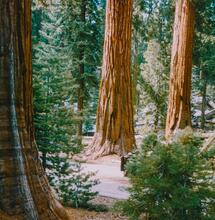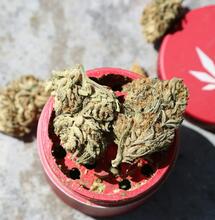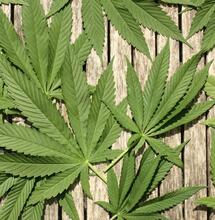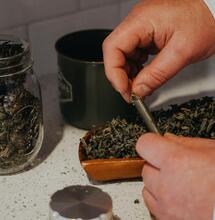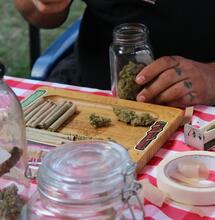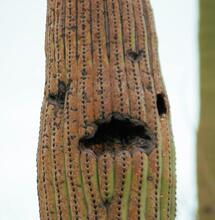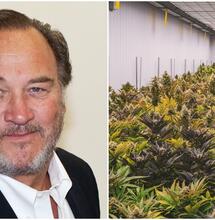Homegrowing Marijuana Laws: Here's an Overview
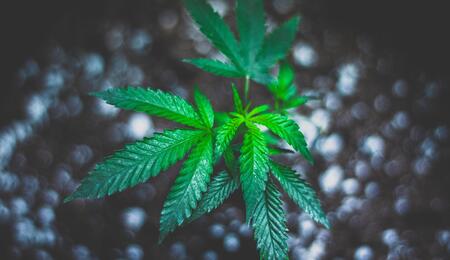
As more states have legalized the recreational and medicinal use of marijuana, it's easy to think that the number of states allowing small-scale home cultivation for personal use has proportionately grown. But you're mistaken. Laws are confusing.
Cannabis grows naturally in the wilderness, however, if the plant reproduces in your backyard, you might end up in legal trouble. While marijuana remains illegal at the federal level, US states have a degree of freedom to determine how the plant can be used, grown, and distributed.
Laws usually permit growing up to several cannabis flowers for personal use. But that's not the case everywhere. From Alaska to Virginia, California to Washington DC, below is general information on legal growing across the US.
Alaska
Marijuana is a legal substance in Alaska. People can use it for fun and as medicines, although smoking is not permitted in public areas.
Regarding growing, adults aged 21 and above are allowed to possess and grow as many as six marijuana plants, of which only three can be mature and flowering at a time.
A household can have a total of 12 marijuana plants if those belong to two different persons. But if a third person comes and wants to grow at the same premises, they are not allowed. If there are 12 marijuana plants in the building, only six of those can be mature and flowering at any given time.
Arkansas
In Arkansas, there are fewer freedoms when it comes to cannabis. There isn't a law for adult use, and the penalties are hefty if a person is caught possessing marijuana. Medical marijuana however is legal, and those interested in medicating with it can access it after they are approved an MMJ.
Arizona
Marijuana can be grown on a home property in Arizona but only for medicinal purposes. The grower in this case must qualify as a patient or a caregiver. The Grand Canyon state law also demands that the crops are kept in an enclosed and locked space. Growers in Arizona were allowed to cultivate up to 12 plants, but a recent change in the law set the maximum to six plants.
California
The Golden State was early to legalize medicinal cannabis back in 1996. It took California 20 years also to introduce a legal framework for the recreational use and growing of cannabis.
Californian growers must be at least 21 years old. They can possess up to six plants at a time regardless of their growing stage and can cultivate where they live only. Growing outdoors, plants cannot be located in the front or side yard setback areas and cannot be visible from public streets or walkways. Californian cities have the authority to ban outdoor growing entirely, but they can't indoor growing.
While there is a limit for non-medical plants, those who grow for medicine can use up to 100 square feet of grow area per residence, and there is no limit whatsoever on the number of plants. That is, as long as the total canopy area does not exceed 100 square feet. A permit is required for a medical garden. For personal, it's not.
See what's legal in California in more detail on this page.
Colorado
The state of Colorado permits its residents to cultivate up to 6 plants at home for personal use only. As many as three plants can be flowering at one time. Residents must be at the age of 21 to grow legally. Plants can't be seen from the outside, therefore must be sealed and closed. At all times, plants must be secured and stay out of reach from minors.
Coloradans should further check local laws for specifics. For instance, if a Denver household has three adults aged 21 or above, they are permitted only 12 flowers at their premises.
The same laws apply to medical marijuana growers. However, a caregiver can claim up to 5 patients and grow as many as 36 plants.
Connecticut
Connecticut is one of the latest countries in the US to advance its recreational cannabis legislation. Residents of Connecticut will be allowed to grow their own cannabis plants, but this measure will activate as of July 1, 2023. On this date, residents age 21 and older will be permitted to grow a total of six cannabis plants. Three plants only can be mature and flowering at any given time.
Different rules will apply to medical marijuana growers, however. Growing weed for medicinal purposes is permitted as of October 1, 2021. The same limits of how many mature and immature plants are in place. Residents aged 18 and above are allowed to grow as long as they have a medical marijuana card.
Delaware
Cannabis is illegal for recreational use in Delaware, although it's decriminalized for possession of small amounts. Patients with specific medical conditions or their caregivers can buy cannabis from a medical dispensary. Patients can possess up to three ounces of cannabis and no more than that within a two-week time.
Hawaii
Far away from Delaware, in Hawaii, things are a little bit better for growers. Those registered in the Hawaii medical marijuana program can grow up to 10 plants of medical cannabis for medical use. The stage of maturity of the plants is not important. The "adequate supply" of the medicinal pot should jointly pose a maximum of 4 ounces of usable marijuana between a registered patient and caregiver.
Growers must designate a single grow location if they intend to cultivate cannabis plants. To activate legal protection, the "grow site" must be registered. For more on the administration, click here.
Illinois
Illinois became the eleventh US state to legalize recreational marijuana in May 2019, with the laws coming into effect in 2020. To start growing cannabis in Illinois, a person must register online for the Illinois Medical Cannabis Patient Program (MCPP). Only a resident of Illinois with a qualifying medical condition, at least 18 years of age, can register in this system.
With a medical cannabis card, plus permission to grow cannabis on your property, a person is allowed up to 5 plants. Crops must be locked, enclosed, and hidden from public view.
Recreational growing of marihuana in Illinois remains only for those designated as "cultivation center agents" - those employed or doing business on behalf of a legalized dispensary center.
Louisiana
Under Louisiana law, only licensed production facilities are to be allowed to grow. And this only applies to medicinal marijuana. Patients access their medicines via state-sanctioned entities for sale.
The Pelican State has taken some steps to reform its medical marijuana program, and it even reduced criminal penalties for possession in 2015. Nevertheless, recreational cultivation at home is illegal, and there are harsh penalties for it.
Maine
Marijuana prohibition started in Maine in 1913, as the state became the first to forbid the plant. Fast forward to 1976, Maine also became the first state to decriminalize cannabis. The state legalized medicinal pot three years after California, in 1999, and in 2016 adult use was also made legal.
Mainers can cultivate cannabis for personal use under the new laws. A person needs to be at least 21 years of age, a state resident and can own up to 3 mature plants, 12 immature plants, and an unlimited number of seedlings. The limitations do not apply to someone who is cultivating for medicinal use. Medicinal growers encompass qualifying patients, caregivers, registered caregivers, and registered dispensaries as authorized by the Maine Medical Use of Marijuana Act.
Plants must be kept aside from the public eye. Those who grow for personal use are supposed to tag each plant with a legible label that includes the owner's name, identification card number, and a notation that the plant is authorized by law.
For more details, direct to this page.
Maryland
The state known for fishing and producing some of the finest crabs in the United States—Maryland, unfortunately, does not support the legal cultivation of cannabis. Offenses involving the use of cannabis in public areas carry a civil fine of up to $500, and penalties are more severe for subsequent offenders. Patients and caregivers can apply for an MMJ card and can only purchase marijuana from state-approved dispensaries.
Massachusets
Adult use of marijuana became legal in Massachusetts in 2016. Since then, the state has allowed residents to grow as many as six cannabis plants for personal use only. The maximum number of flowers per property is 12, regardless if more than two people live there.
As in other states, the homegrowing law does not permit the plant to be visible from the street. The law provides different limits for cannabis possessed in the home, but the very maximum is up to ten ounces, which must be enclosed and secured.
For patients to grow enough cannabis to yield a two-month supply for personal medical use, they must apply for a Hardship Cultivation with the state's medical marijuana program.
Michigan
Medicinal marijuana in Michigan became legal in 2008, and a decade later, the state began regulating recreational use as well. Residents of Michigan can carry no more than 2.5 ounces outside and up to 10 ounces at home.
A person must be of legal age, 21 or older, to use or grow cannabis. Growers are permitted up to 12 cannabis plants at any given time. The crops must be taken care of inside, in a secured out-of-sight facility.
For medical use, both registered patients and caregivers can grow medicinal pot.
Missouri
Kansas City is world-famous for barbeque, and you bet it's the real stuff to munch when high, but legal marijuana consumption in Missouri applies only for medical use. Patients and caregivers can possess up to 4 ounces a month. Up to 6 mature and flowering plants can be grown at home premises, in a space that's enclosed and out-of-sight. Growers must pay a fee for maintaining a medicinal cannabis garden.
Montana
There's gold, silver, and copper in those mountains. And possibly pot, too. Recent changes in the law allow Montana residents to grow up to 8 plants per household. An adult person can possess up to 4 mature flowering plants, and the rest would be four seedlings.
Montana is to launch legal recreational sales of cannabis in 2022, therefore the best way to obtain legal cannabis in this state during the year 2021 is to grow it yourself.
Similar limits for homegrowing apply to medical consumers, who are also bound to report the size of their garden to the state's Department of Public Health.
Nevada
The only issue about growing your cannabis in Nevada is if you live too close to a dispensary. Of course, a person also must be of legal age.
Given that Nevada residents live 25 miles away from a dispensary, they can farm up to 6 plants per individual and up to 12 per household with two or more persons living there. Growers must own the property to grow weed or obtain permission from the property owner if they don't.
New Hampshire
There are good chances the law changes soon, and residents of New Hampshire could cultivate marijuana plants for personal use at home. But for now, the bill known as SB 420 is stagnating, and homegrowing remains punishable by law.
Medical marijuana patients in New Hampshire are allowed to grow up to 6 plants, however. Of which, only three can be mature, and the rest immature. They must register with the state to grow their medicine legal.
New Mexico
As of July 2021, it is legal for people in New Mexico to own marijuana for recreational uses and also cultivate plants at home. The new law permits people 21 and older to possess up to 2 ounces of marijuana and plant up to 6 flowers, or a total of 12 per household. If caught growing more than six plants, it's considered a felony. Growers must also respect drug-free school zones.
New York
After significant delays, New Yorkers got a new law for the recreational use of cannabis earlier in 2021. The people of New York who are of legal age can now grow up to 6 plants in their building, for personal use only. Half of those plants can be mature and flowering. A household can have as many as 12 plants (6 mature only), regardless if more than two persons reside there.
Growers should obtain a legal permit from the Office of Cannabis Management before they begin cultivation. The new law also specifies that it remains illegal to use homegrown cannabis for preparing cannabis hash oils and concentrates. For more details on the law, click here.
Oklahoma
There is only one type of grow license currently for the state of Oklahoma—a medical marijuana grower license. A medical marijuana grower license allows a business to legally grow marijuana for medical purposes in Oklahoma. After obtaining an MMJ card, Oklahomans can access cannabis medicines via their local dispensaries.
Oregon
As of 2015, Oregonians can cultivate up to 4 plants in their home. Four is the limit, regardless of how many adult persons may occupy the same residence. It's also legal to possess up to 8 ounces of usable cannabis at home. When outside, a person can carry up to one ounce.
Caregivers can tend to a maximum of eight patients at any given time and no more than six mature plants for each patient.
Rhode Island
Only patients registered with the state's medical marijuana program can legally use and possess up to 2.5 ounces of cannabis. The program allows home cultivation with a limit of 12 mature plants and 12 seedlings. All marijuana plants must be grown indoors. Caregivers can also take the role of cultivators.
Recreational possession of one ounce or less is considered a civil crime for first-time offenders.
Vermont
It took almost 15 years for the Green Mountain State to introduce recreational use of cannabis after the state first legalized medical marijuana in 2004. With the law, the people of Vermont can grow a maximum of 9 marijuana plants. Only two of which can be mature at any given time.
Virginia
On April 7, 2021, Virginia became the first state in the South to begin legalizing adult-use cannabis. With the new law, adults 21 and above can grow up to 4 marijuana plants per household (not person) starting July 1, 2021.
Plants must be tagged for personal use and can be grown only at the person's principal place of residence. Like in other states, cannabis flowers must stay hidden from the public eye and away from the reach of minors.
It remains illegal to nourish more than four plants, sell or distribute marijuana at home. It also remains illegal to sell seeds, clones, flowers, or any other part of the marijuana plant in Virginia before 2024.
Washington DC
The capital boasts some unique pot laws. The district's cannabis market doesn't allow consumers to "purchase" marijuana in the traditional buyer-seller sense. Still, people can buy another item, good or service, and then receive a free pot product as a sort of "gift" from the vendor.
A person in Washington DC can grow up to six marijuana plants, no more than three of which are mature and flowering. Consuming is only allowed in private. Users should also possess marijuana-related drug paraphernalia like bongs or rolling papers only for personal use, associated with one ounce or less of marijuana.
Conclusion
Laws, especially those concerning cannabis, can be a subject of change. Lawmakers consistently revise regulations for both medical and recreational use and the cultivation of cannabis. So, it's good to always check back with local authorities to get extra information or the latest legal updates. Please also note that the information presented here does not represent legal advice and should not be construed as such.
Happy growing!









